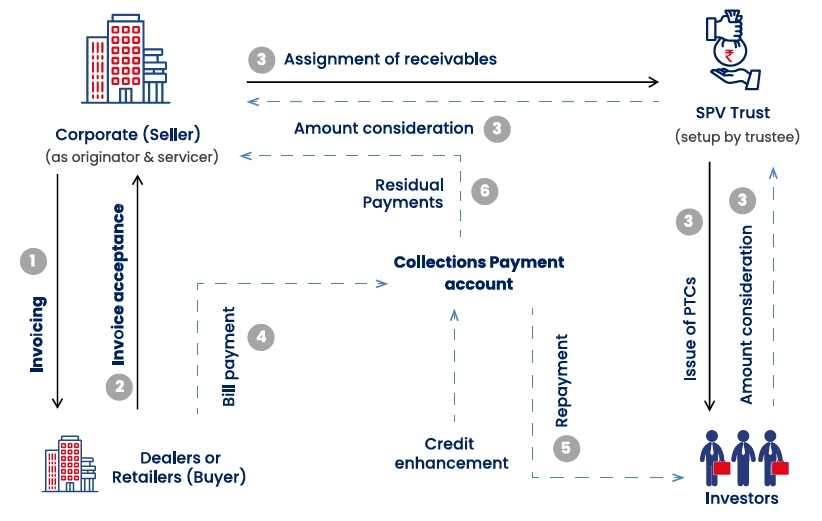Cash Flow Management
Dashboards - CFO's Strategic Command Center

The role of a Chief Financial Officer (CFO) has evolved dramatically over the years, shifting from a focus solely on financial accuracy and compliance to a more dynamic, strategic position within the organization. The traditional CFO, tethered to stacks of static reports and manual data analysis, is increasingly juxtaposed with the modern CFO who harnesses the power of cutting edge tools like dashboards to drive financial decision making. As we explore this shift, it becomes evident that the utilization of dashboards is not merely a technological upgrade but, a strategic leap towards enhanced efficiency, real time insights, and a proactive approach to finance management. Let us discover how a modern CFO’s proficiency in dashboard utilization is reshaping the landscape of financial leadership, from the lens of trade finance.
1. Real Time Visibility: Navigating Trade Tides
Supply Chain Finance Programs involve a rapid influx of transactions, making real time visibility critical. Dashboards provide the CFO with an instantaneous and unified view of ongoing transactions, enabling quick decision making. In a scenario where financing needs are frequent and diverse, the dashboard acts as a real time financial compass, helping the CFO stay ahead of the financial tides.
2. Performance Analytics: Navigating the High Level Patterns and Trends
Dashboards act as a financial lighthouse, allowing the CFO to sift through the large volume of counterparty transactions to and identify patterns. Visualizing key metrics such as trade volumes, limit utilizations, channel partners’ margins, and transaction costs in real time enables the CFO to fine tune financial strategies despite the sheer volume of financial data.
3. Interdepartmental Collaboration: A Unified Front in Financial Complexity
In an environment where high invoice volumes are the norm, collaboration between finance and operations departments becomes crucial. Dashboards serve as a centralized hub, fostering collaboration by establishing shared metrics and KPIs accessible across departments. This ensures a unified front in navigating the complexities of supply chain finance programs, especially when dealing with numerous vendors and dealers. For instance, in a 60 year old freight forwarding company, the CFO works closely with his operations team to understand how to optimise the belly space of an aircraft. Here the finance and operations functions work on the Daily Load Report (DLR) to understand and predict the movement of goods from one hub to another. For instance, during the recent cyclone in Chennai, it is with a deep understanding of DLR, the finance team in the company could predict better and move the goods to an airport closer to Chennai without much impact on operational costs. On the other hand, the CFO with his ops and finance teams heavily engages in ‘thrash out sessions’ to optimize resources, working capital, and other costs to maintain dominance in the industry and maximize their share in the aircraft’s belly space. In times of financial uncertainty, these dashboards come in handy for fostering collaboration and enabling informed decision making across departments.
4. Closely Monitoring Dealers for Complete Utilization
SCF dashboard for instance, allows the CFO to closely monitor dealer cohorts. By ensuring that dealers fully utilize the credit provided, including financing options, the CFO can stimulate increased purchasing power. This, in turn, leads to more products being bought from the company, fostering growth and a mutually beneficial relationship. The dashboard becomes a tool for optimizing the complete utilization of resources and support extended to dealers.
5. Managing a Balanced Receivable and Payable Portfolio
In the intricate loop of supply chain finance, managing a balanced portfolio of receivables and payables is essential. Dashboards equipped with financial metrics enable the CFO to strike a delicate balance, ensuring adequate capital flows through the business. Maintaining equilibrium in receivables and payables ensures that the company has the necessary capital for operations, preventing liquidity constraints and facilitating business as usual.
Dashboards serve not only as technological aids, but also as the CFO’s strategic command center, navigating the company through financial complexities with precision, clarity, and collaboration. As the CFO continues to chart the course towards financial success, dashboards ensure that every decision is informed, every challenge is anticipated, and the company sails towards sustained excellence.
To know more on how Vayana can help you and your organization manage trade finance with multiple financial institutions and multiple counter parties better, write to us at enquiry@vayana.com







